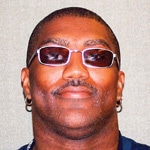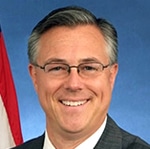![]() It is reasonable to wonder just how many millions of dollars in sanctions must be assessed against railroads by the federal government before they learn the lesson that employees are not the equivalent of number 2 pencils to be chewed on at will and discarded when convenient.
It is reasonable to wonder just how many millions of dollars in sanctions must be assessed against railroads by the federal government before they learn the lesson that employees are not the equivalent of number 2 pencils to be chewed on at will and discarded when convenient.
In the most recent comeuppance applied to Norfolk Southern by the U.S. Department of Labor’s Occupational Safety and Health Administration, sanctions totaling more than $802,000 were imposed as punishment for violating the whistleblower protection provisions of the new section 20109 added by Congress in 2007 to the Railroad Safety Act. NS was found to have harassed, intimidated and ultimately fired three employees who reported and sought medical attention for on-duty injuries.
NS also was ordered by OSHA to expunge the disciplinary records of the three whistleblowers, post workplace notices regarding railroad employees’ whistleblower protection rights and provide training to its employees about these rights.
The latest OSHA fines — and there have been several in the past– against NS followed OSHA investigations in Greenville, S.C.; Louisville, Ky., and Harrisburg, Pa., each showing, according to OSHA, “reasonable cause to believe that the employees’ reporting of their workplace injuries led to internal investigations and, ultimately, to dismissals from the company.”
OSHA does not release the names of whistleblowers. The Harrisburg employee was reportedly a conductor; the Louisville whistleblower an engineer and the Greenville whistleblower a maintenance-of-way employee.
“Firing workers for reporting an injury is not only illegal, it also endangers all workers. When workers are discouraged from reporting injuries, no investigation into the cause of an injury can occur,” said Assistant Secretary of Labor for Occupational Safety and Health Dr. David Michaels. “To prevent more injuries, railroad workers must be able to report an injury without fear of retaliation.”
In 2011, OSHA, in hitting NS with sanctions of more than $122,000, said NS’ culture of employee harassment and intimidation permitted the railroad to “maintain the appearance of an exemplary safety record and continue its 22-consecutive-year record as recipient of the E.H.Harriman Gold Medal Rail Safety Award.”
In the latest assessment of sanctions against NS, OSHA reported:
* A maintenance-of-way employee was charged with improper performance of duties after reporting an injury as a result of being hit by a NS highway vehicle. OSHA found he had been singled out and treated with bias because of reporting the injury.
* An engineer was charged with falsifying an injury and terminated after reporting he tripped and fell in a locomotive restroom. OSHA found the investigative hearing was flawed and orchestrated to intentionally support the decision to terminate the employee.
* A conductor was charged with making false and conflicting statements and terminated after reporting a head injury sustained when he blacked out and fell down steps while returning from the locomotive lavatory. OSHA said that the day before the injury, the employee had been lauded for excellent performance, highlighted by no lost work time due to injuries in his 35-year career. OSHA again found that the investigative hearing was flawed, and there was no evidence the employee intended to misrepresent his injury.
The Federal Railroad Safety Act of 1970 extended whistleblower protection to employees who are retaliated against for reporting an injury or illness requiring medical attention. The Rail Safety Improvement Act of 2008 added additional requirements ensuring injured workers receive prompt medical attention. Prohibitions were imposed by Congress on carrier intimidation and harassment of injured workers in an effort to end a culture that placed the winning of carrier safety awards and year-end managerial bonuses as a higher priority than treatment and prevention of injuries.
The laws were passed by Congress after the UTU documented a railroad culture of harassment and intimidation against injured and ill workers. Their purpose is to protect rail workers from retaliation and threats of retaliation when they report injuries or illness, report that a carrier violated safety laws or regulations, or if the employee refuses to work under certain unsafe conditions or refuses to authorize the use of safety related equipment.
An employer is outright prohibited from disciplining an employee for requesting medical or first-aid treatment, or for following a physician’s orders, a physician’s treatment plan, or medical advice.
Retaliation, including threats of retaliation, is defined as firing or laying off, blacklisting, demoting, denying overtime or promotion, disciplining, denying benefits, failing to rehire, intimidation, reassignment affecting promotion prospects, or reducing pay or hours.
UTU designated legal counsel have pledged to investigate and assist UTU members in bringing complaints under these laws.
A rail employee may file a whistle-blower complaint directly with OSHA, or may contact a UTU designated legal counsel, general chairperson or state legislative director for assistance.
A listing of UTU designated legal counsel is available at:
https://www.smart-union.org/td/designated-legal-counsel/
or may be obtained from local or general committee officers or state legislative directors.
To view a more detailed OSHA fact sheet, click on the following link:
www.osha.gov/Publications/OSHA-factsheet-whistleblower-railroad.pdf
 Among the numerous political challenges facing working families is preservation of Railroad Retirement and Social Security, which are both under attack by political conservatives.
Among the numerous political challenges facing working families is preservation of Railroad Retirement and Social Security, which are both under attack by political conservatives. Suicide by rail is no stranger to operators of steel-wheel trollies on Southeastern Pennsylvania Transportation Authority’s Victory Division in suburban Philadelphia.
Suicide by rail is no stranger to operators of steel-wheel trollies on Southeastern Pennsylvania Transportation Authority’s Victory Division in suburban Philadelphia. Some 600 mourners – including more than 300 coworkers and UTU officials — attended the funeral June 9 of slain Los Angeles County Metropolitan Transportation Authority (LACMTA) bus operator Alan Thomas, who was murdered May 20 by a lone passenger.
Some 600 mourners – including more than 300 coworkers and UTU officials — attended the funeral June 9 of slain Los Angeles County Metropolitan Transportation Authority (LACMTA) bus operator Alan Thomas, who was murdered May 20 by a lone passenger. By Joe Szabo –
By Joe Szabo –